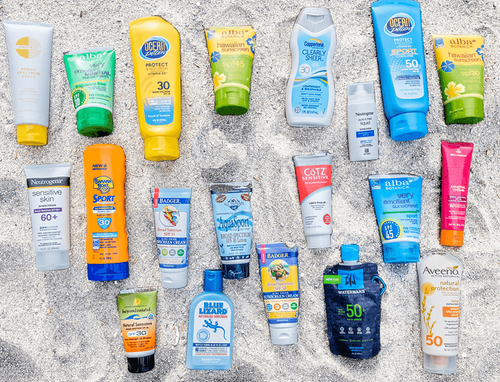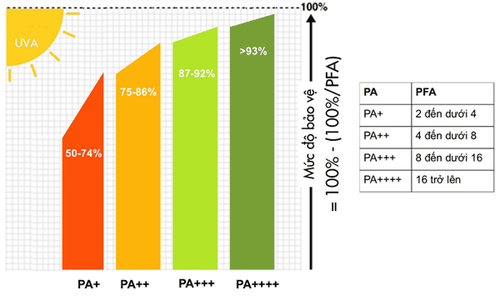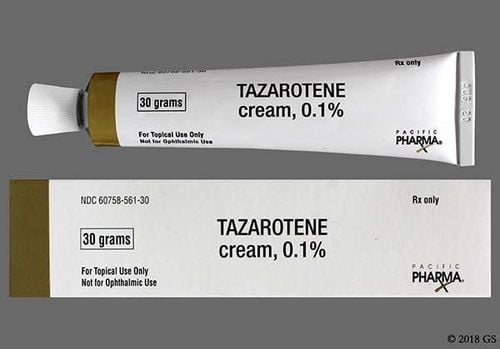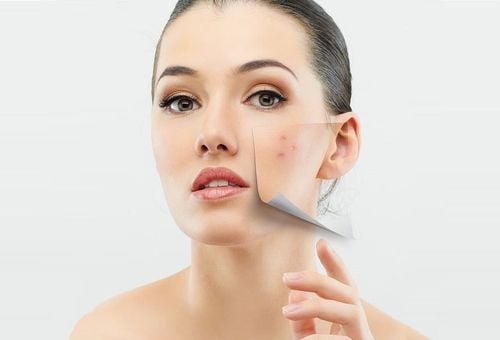This is an automatically translated article.
Sunscreen is a precaution to protect the skin from the sun's ultraviolet radiation. However, not all sunscreen ingredients are beneficial. In fact, some ingredients that can be considered safe for humans are not harmful to the environment. So what are the ingredients in sunscreen?
1. The mechanism of sunscreen
Sunscreen is a precaution to protect the skin from the sun's ultraviolet radiation. These are the two main types of UV radiation, UVA and UVB, that damage the skin, cause premature aging and increase the risk of skin cancer. These UV rays are in contact with the skin year-round, even when it's cloudy or you're indoors (some UV rays can penetrate glass). Sunscreen is divided into 2 types:
Chemical sunscreen: the mechanism works like a sponge, absorbing the sun's rays. They contain one or more active ingredients such as oxybenzone, avobenzone, octisalate, octocrylene, homosalate, or octinoxate. These sunscreens tend to be easier to apply to the skin without leaving a white residue. Physical sunscreens: act as a shield, they deflect the sun's rays. They contain the active ingredients titanium dioxide, zinc oxide, or both. If you have sensitive skin, choose this sunscreen. Choosing a sunscreen is not easy, because not all ingredients in sunscreen are beneficial. In fact, some ingredients can help prevent melasma and not cause skin aging, while others are considered safe for humans and pollute the environment.
SEE ALSO: Sunscreen for skin in the summer with the right food
2. Sunscreen ingredients
The ingredients of sunscreen are as follows:
2.1 Tinosorb S and M Tinosorb S and M is one of the common ingredients in Europe, Tinosorb S can protect from UVA and UVB rays, long and short make it It becomes one of the most ideal ingredients to prevent sun damage. Tinosorb also helps to stabilize other sunscreen filters and is allowed in concentrations up to 10%.
However, the US Food and Drug Administration (FDA) has not approved this ingredient for a number of reasons, but is accepted in several other countries such as Australia, Japan and Europe. The best benefit that tinosorb brings is that it is an antioxidant and prevents sun damage. This ingredient is often added to sunscreens to increase effectiveness, and no high-risk factors have yet to be identified.

Tinosorb S là một trong thành phần của kem chống nắng
Although this ingredient has been marketed in Europe since 1993, the FDA did not approve the ingredient Mexoryl SX for L'Oréal until 2006. Medically, Mexoryl SX has been approved for use in adults. and children over 6 months old. When combined with avobenzone, the UVA protection of both ingredients enhances effectiveness and stability.
2.3 Oxybenzone Oxybenzone is commonly found in broad spectrum sunscreens that filter out both UVB and UVA rays (specifically short UVA rays). It is also one of the most common ingredients, found in most sunscreens on the U.S. market, and can make up as much as 6%.
However, the ingredient was banned in Hawaii after a study created by the Haereticus Environmental lab found that the ingredient contributed to bleaching and poisoning of coral reefs. For environmental reasons, many people have opted out of products containing Oxybenzone, instead looking for eco-friendly green sunscreens.
Most recently, a study found that our skin absorbs sunscreen ingredients like oxybenzone. This caused a spike in interest in safe sunscreens, although the study reported no harm and concluded: “These results do not indicate that people should limit their use of sunscreen. sunscreen". In addition, another study also showed that oxybenzone did not cause significant endocrine disruption.
Sunscreens containing oxybenzone have good sun protection and prevent burns. However, if your skin is sensitive, you should be careful with this product because it can cause skin irritation.
2.4 Octinoxate Octinoxate is a common and potent UVB absorber, which means it is effective in preventing sun damage. When octinoxate is combined with avobenzone, they can provide excellent broad-spectrum protection against burns and aging. This ingredient is allowed in formulations (up to 7.5%), but octinoxate is banned in Hawaii due to environmental risks on coral reefs.
2.5 Avobenzone Avobenzone is commonly used to block all UVA rays and is reported to be “unstable” in physical sunscreens. In essence, the component will destabilize when exposed to light. To combat this, avobenzone is often combined with other ingredients (such as mexoryl) to stabilize avobenzone. In many countries, avobenzone is used in combination with specific zinc oxide and titanium dioxide, but in the United States This combination is not allowed. Although it is found in broad-spectrum sunscreens, it is often combined with other chemicals, as avobenzone itself loses 50 to 90% of its filtering capacity within an hour of exposure to light. . In the US, the FDA considers this ingredient safe but limits its concentration to 3% in sunscreen formulations.
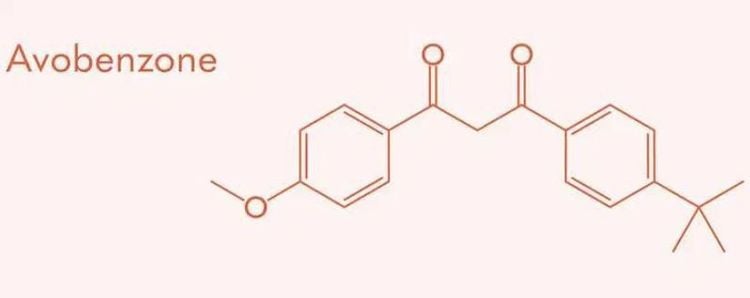
Cấu trúc hóa học của Avobenzone - thành phần của kem chống nắng
2.6 Titanium dioxide Titanium dioxide acts as a broad spectrum UV filter (although it does not block long UVA1 rays). There are two sunscreen ingredients that are generally recognized as safe and effective by the FDA, both of which are physical sunscreen ingredients. The FDA approved titanium dioxide for use in children over 6 months, and research shows it is generally safer than other sunscreens when it comes to skin contact.
However, researchers also suggest that electrical sprays and sprays should be avoided as it can be dangerous. According to a 2011 review noting, titanium oxide nanoparticles upon oral exposure are classified as possibly carcinogenic to humans, meaning only animal studies have been performed. Remember that this ingredient is not limited to sunscreen. Titanium dioxide can also be found in SPF makeup, powders, lotions, and whitening products.
2.7 Zinc oxide Zinc oxide is a second GRASE approved sunscreen ingredient in concentrations up to 25%. Studies have shown it to be safe and there is no evidence of skin penetration even after repeated use. In Europe, this ingredient is given a warning label because of its toxicity to aquatic life. The ingredient is not harmful unless swallowed or inhaled.
Compared with avobenzone and titanium oxide, zinc oxide is considered photosensitive, effective and safe for sensitive skin. On the other hand, research also says it's not as effective as chemical sunscreens and not as effective at protecting skin from sunburn as it is for sun damage.
2.8 PABA and propamine salicylate PABA PABA also known as para-aminobenzoic acid, it is a strong UVB absorber. The popularity of this ingredient has declined due to it increasing atopic dermatitis and increased photosensitivity. Animal studies have also shown certain levels of toxicity, leading the European Commission and FDA to limit the concentration of formula to 5%. However, in Canada has completely banned the use of PABA in cosmetics.
Trolamine salicylate also known as Tea-Salicylate, was considered GRASE in 2019, but research shows it to be a weak UV absorber. Because of this, the component is limited in its percentages along with other GRASE components.
In a nutshell, sunscreen is a precaution to protect the skin from the sun's ultraviolet radiation. However, not all sunscreen ingredients are beneficial. So, before buying, read carefully the ingredients of sunscreen to be able to choose the most suitable cosmetics for your skin.
Please dial HOTLINE for more information or register for an appointment HERE. Download MyVinmec app to make appointments faster and to manage your bookings easily.
References: .aad.org, healthline.com




